When riding in the rain, a trick I learned from a seasoned delivery rider is to open up your chest and let it all in. Your motorcycle is well capable of handling a little shower or even a lot. But the problem when riding in the cold and showers is that we clench and tuck up on the motorcycle, applying unintelligible commands at the controls.
Still, you have to compensate for the 50% drop in the coefficient of friction, which halves the traction of your tires on the pavement. In fact, poor weather is more depressing than two tire punctures in one afternoon of riding, so I thought, why not start an uplifting topic—the best motorcycle for rain:
- Suzuki GSX-R1000 — Best SuperSport
- Kawasaki Ninja 650 — Best Sport Bike
- Honda GL1800 Goldwing — Best Luxury/Premium Cruiser
- BMW R 1250 GS — Best Adventure
- Harley Electra-Glide Ultra — Best Cruiser
- Ducati Multistrada 1260 — Best Dual Sport
- Yamaha Niken GT — Best Sport Touring
Some bikes come with full-fledged fairings and windshields to increase rider protection from the elements and may help to keep you drier and more comfortable. In addition, the weight of a motorcycle has surprisingly a lot to do with its performance when it pours, making it essential to be prepared for any eventualities.
| Product Name | Category | Dimension | Check & Shop Now |
|---|---|---|---|
| AGV AX-9 | Best Helmet | 3 Shell Sizes: XS-MS, ML-XL, 2XL | RevZilla | CycleGear | Amazon |
| AGVSPORT Mayhem | Best Gloves | 5-13 Inches | Amazon |
| Alpinestars Corozal Adventure | Best Boots | 36-50 EU Size/3.5-14 USA Size | RevZilla | MotoSport | Amazon |
| AXIAL Block | Best Balaclava | SM, MD, LG, XL, 2X. | RevZilla | J&P Cycles | Amazon |
| AGVSPORT Flex Tex Vented Waterproof | Best Jacket | L-XL, XL-XXL | Amazon |
| Klim Vented | Best Socks | SM, MD, LG, XL | RevZilla | J&P Cycles | Amazon |
| Klim Nac Pak Hydrapak | Best Hydration Bladder/Backpack | Medium Size | RevZilla | MotoSport | Amazon |
| AGVSPORT Mojave | Best Pants | S, M, L, XL, XL, XXL | Amazon |
| NoNoise Motorsport Noise Filter Ear Protection | Best Ear Plugs | Single Pack | RevZilla | Amazon |
| EVS R3 Collar | Best Neck Brace | CE and Directive 89/686/EEC Certified | RevZilla | MotoSport | Amazon |
| AGVSPORT Super Alloy | Best Jeans | S, M, L, XL, XL, XXL | Amazon |
But What Features Must the Best Motorcycle for Rain Have?
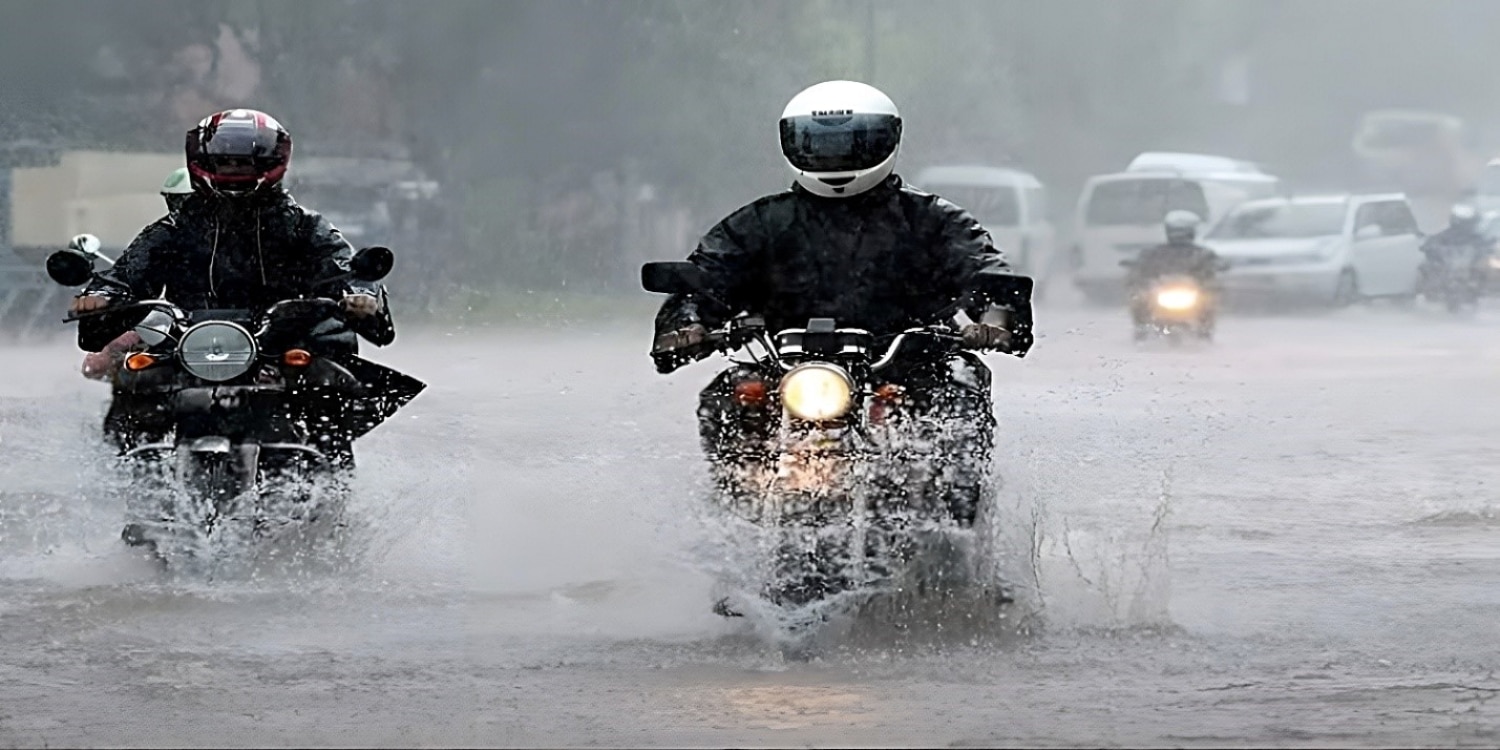
When picking a good rain-roadworthy motorcycle, here are some specifications to pay attention to:
- Weight: The sheer mass of a motorcycle is probably the most important factor to consider when we talk about friction coefficients. Heavier bikes exert more pressure on their contact patches and retain traction even when crossing water puddles at full power. They have better brakes and will not get blown around as much in a windy storm.
- Protection from the Elements: A small scooter with floorboards beats a supercharged street fighter in keeping your feet dry away from water flowing over the road surface. Similarly, full-faired motorcycles will do better for the rider than standard naked ones.
- Braking Capability: Motorcycles with ABS will do better with less grip as they avoid locking and skidding. Cornering ABS is the newest iteration of the technology that reduces intervention during cornering, a danger of easily losing the rear wheel traction and fishtail. Having two front brake calipers and discs rather than one provides more stopping power and better control. Some bikes have linked brakes so that applying brakes on one wheel also automatically puts pressure on the other one to balance out.
- Heated Seat and Grips: Because numb hands are the leading cause of crashes on cold rides, it is rewarding to invest in extras, like motorcycle heated grips and seats, if you plan to occasionally ride in the rain. Heating facilities from the factory are the best although a bit pricier compared to aftermarket options.
- Suspension: The suspension takes the brunt of rough patches concealed by muddy rainwater. It’s useful to include an adjustable, high-quality, and well-tuned suspension for the total weight and road condition. Electronic suspension makes it easier to control and adapt the suspension to various difficulties along your route. Inverted forks at the front are more resistant to water, mud, and grime while a mono-shock in place of the traditional twin-shock rear setup offers a compact and sturdy solution with a big positive draw on handling.
- Tires: Rain or wet weather tires have a radial tread pattern that is often unique to each model but intended to push water outwards to avoid hydroplaning while retaining a decent grip on wet pavement. Rain tires should contain silica content (water-hating) components because wet rubber does not offer much in the way of adhesion to the road.
- Engine Size and Power: There are better choices than getting a torque devil for new or less experienced riders. However, you require power to make a pace that keeps you relatively dry. The engine and drivetrain combination must deliver smooth power to the wheel to prevent jerky output, which can break traction.
- Good Handling Characteristics: Responsive handling is defined by the width and position of handlebars, the wheelbase, and the center of mass, among other intricacies of each model. Wider handlebars give the rider more leverage to make the bike turn while the ease with which the bike is meant to turn is pegged on the wheelbase. A longer wheelbase offers increased stability but makes it more difficult to guide a motorcycle through a tight turn.
- Seat Height: Adjustable seat height is equally important to the rider as other ergonomics. It is the height of the bike from the seat to the floor so that the rider can walk the bike. Tip-toeing is not a good strategy for riding through the rain if you have to have good control of the bike. No single height fits all, you will have to find one that fits your physical capabilities.
- Trail Size and Rake Angle: This refers to the distance from the front axle to the steering head. It makes the load distance leverage to turn the front wheel, affecting how easy it is to steer the vehicle. A shorter trail size means less force applied at the helm to steer and makes the motorcycle agile as you want in a sportier model. On the other hand, a longer trail size, as in cruisers, makes it more stable in a straight line, but at the price of a hard time taking tight turns. Trail size is adjacent to the rake angle and therefore increases with an increase in rake angle.
- Ground Clearance: Ground clearance is how high the motorcycle chassis and parts (other than the wheels) ride off the ground. It determines the off-roading capabilities. When considering rainy weather, you need good clearance to go over potholes and other obscure obstacles that may pop up without warning.
- Headlights and Auxiliary Lighting: Visibility is so much poorer when it rains that many crashes occur due to late braking. Having a strong headlight and fog lights not only allows other drivers to see you but also helps you keep it between the lines and shiny side up.
- Rider Aid: Riding support tech can make a world of difference when riding and distracted. New models have rain mode, where they tune down the bike’s power and make it more stable under rain conditions. Specific models may include proprietary stability control systems, wheelie control, anti-lock brakes, traction control, and traction control system as rider aids making the bike more controllable under less-than-ideal riding conditions.
Rainfall Patterns and How They Affect Your Riding During the Downpour
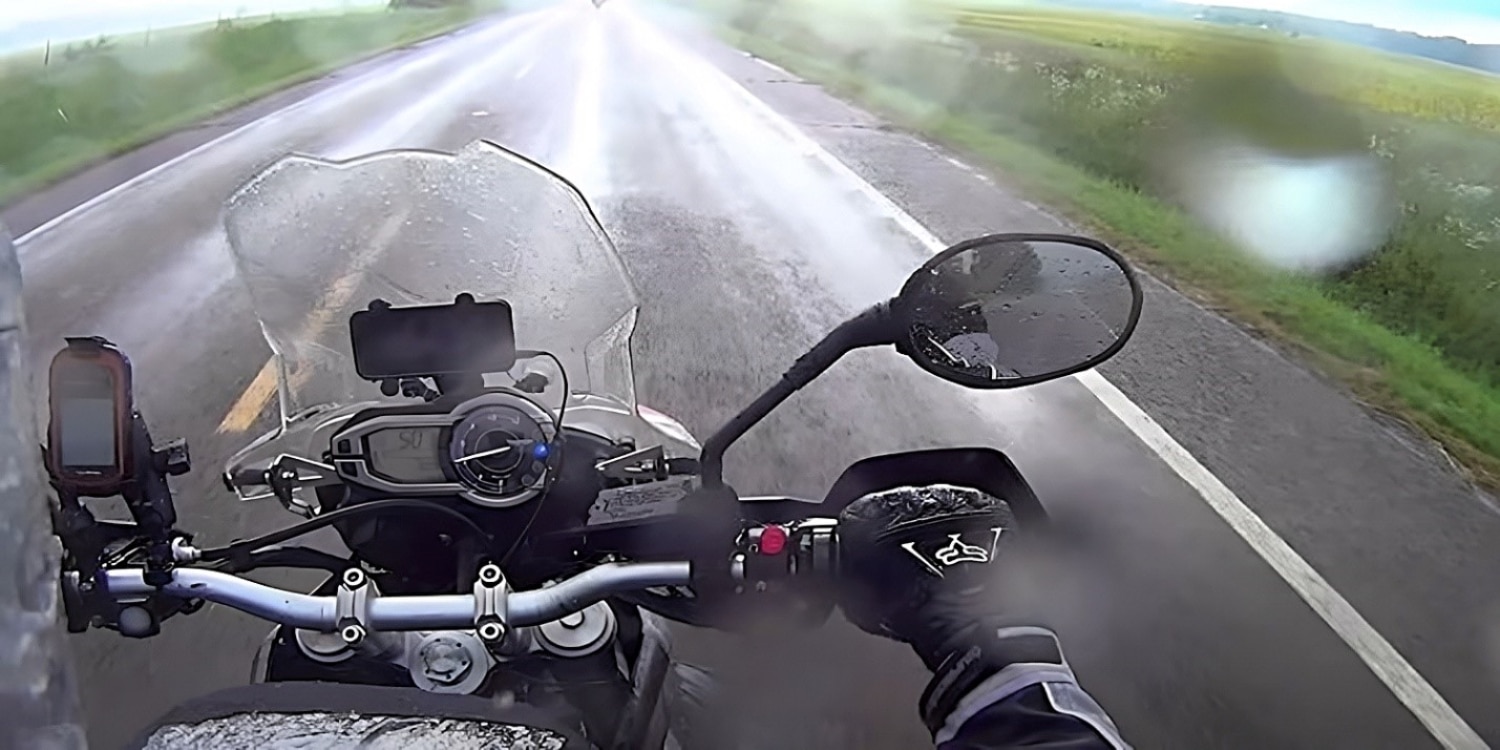
In a study by the NHTSA that concluded in 2022 analyzing more than 125,000 crashes spanning a decade, rain caused only 2% of motorcycle fatalities. Snow and fog account for the missing one percent while an overwhelming majority of crashes (97%) happen on clear and cloudy days. This is despite another conclusion of the same report that slight rain increases the chances of a crash by close to 30%.
Just the same, you cannot be too careful on a rainy day. Even better than pulling off the highway to wait it out is avoiding areas that are likely to experience showers as you plot your route. You can consult the weathercaster for predictive weather patterns, but here are the usual suspects around the U.S. for high precipitation. We grouped them into two, smaller communities and larger cities.
Wettest Cities, By Population, Annual Rainy Days, and the Average Annual Rainfall, 2022
| Small Cities (50,000+ Population) | Small Cities - Rainy Days Per Year | Small Cities - Average Annual Rainfall (Inches) | Big Cities (300,000+ Population) | Big Cities - Rainy Days Per Year | Big Cities - Average Annual Rainfall (Inches) |
|---|---|---|---|---|---|
| Hilo, HI | 276 | 130 | Miami, FL | 140 | 61.9 |
| Cold Bay, AK | 236 | 42 | New York, NY | 121 | 64 |
| Yakutat, AK | 228 | 155 | Nashville, TN | 119 | 56 |
| Annette, AK | 226 | 101.63 | Orlando, FL | 118 | 49.77 |
| Juneau, AK | 224 | 71 | Birmingham, AL | 117 | 53.7 |
| Mt. Washington, NH | 213 | 98.86 | Atlanta, GA | 113 | 52 |
| St. Paul Island, AK | 208 | 24 | Memphis, TN | 108 | 49 |
| Quillayute, WA | 207 | 99.54 | New Orleans, LA | 108 | 47.12 |
| Kodiak, AK | 198 | 81 | Houston, TX | 105 | 46.6 |
| Lihue, HI | 196 | 45 | Tampa, FL | 105 | 51 |
Source: National Centers for Environmental Information (NOAA)
Rainfall in the United States averages 38 inches annually. But why are three of the ten wettest large cities in Florida and six of the wettest small communities in Alaska?
A famous joke goes, “Florida is the sunshine state, where all the sunshine is liquid,” so, yeah, the wintertime doesn’t suck. It doesn’t rain much at all. But the solstice, on the hand… hot, humid, and rainy almost every day. For instance, June, July, August, and September are the months with the rainiest days in Miami, Florida. With 19 days of rain or snow, August has the most rain on average. With only six rainy days on average, March is the driest month. Similarly, Cold Bay has 59.37 rainy days (16.27% of the time) with an average yearly precipitation of 36.13 millimeters (1.42 inches).
New York sees the most rain in April through to June. As the temperatures rise, so does the frequency of the showers with a peak in May. The Monsoon is not such a bad time to visit New York because it’s neither hot nor cold, and hotel prices are quite low. You will not have to queue as much in most public places you visit.
A Nashville to Orlando trip on a motorcycle isn’t a bad idea if you don’t plan to leave anywhere between March and August when it’s the rainy season. Or, if you are planning to ride in the rain, then it’s the absolute best time. There are a bunch of places to visit along the way namely; Atlanta, Chattanooga, Huntsville, Gainesville, DeLand, Blue Ridge, Ormond Beach, Crystal River, Ocala, and Dahlonega.
In Alabama, there are new and exciting motorcycle routes to explore, including the Little River Canyon Parkway near Birmingham, AL. It is a challenging twisty well paved road with some sweepers that make it a blast to ride, especially in dry weather. Therefore, avoid visiting in March when rains are most frequent.
Or, you can touch down in the land of the delta blues in the middle of the pouring rain and ride with your tires ten feet off the Beale. Memphis is another popular destination for travelers on two wheels and, if you plan to arrive in April, you just might relive your favorite country pop song.
But we know not everyone is cut out for sprawling city riding so we threw in a few sleepier towns for good measure. If you enjoy open country roads and scenic views, then you will be home in Alaska. It’s not like this is a storm chaser’s guide around the country, but the rainiest places are often also the most beautiful.
Risks Associated With Riding in the Rain

But why is riding in the rain perilous? Let’s analyze a few scenarios at the risk of making a Final Destination sequel.
Low Visibility
Motorcycles are less conspicuous than cars because of their smaller lateral size and will be less noticeable even under normal conditions. Even from the rider’s perspective, riding with the visor down in the rain can be a daunting move as it is likely to fog up inside the helmet. Lower vision and decreased traction are the perfect recipes for disaster when rocketing down a busy city street.
So, when you ride in the rain, have all your auxiliary lights on and where necessary, hazard blinkers. Reflective strip gear on the bike can make you more conspicuous.
Reduced Traction
Roads will become the most dangerous during the first few minutes of rain because the water mixes up with oil and other slippery organic and inorganic materials deposited by passing cars on the asphalt. Unless you are riding a wooden chariot, rubber tires will lose half of their grip due to drop in coefficient of friction when you transition from dry to wet asphalt. This phenomenon is unfair for two-wheelers because they have fewer contact patches of lesser area.
Case in point, out of a NHTSA sample size of 5,100 fatal crashes involving motorcycles in 2022, about 23% were riders hitting road fixtures, fences, trees, and other non-movable objects. In comparison, a similar sample size of car crashes revealed that only about 16% of drivers hit such objects. The numbers decrease as we move from lighter to heavier trucks at 13% and 4% respectively. Therefore, poor weather affects motorcyclists more adversely than other motorists on the road.
Hydroplaning
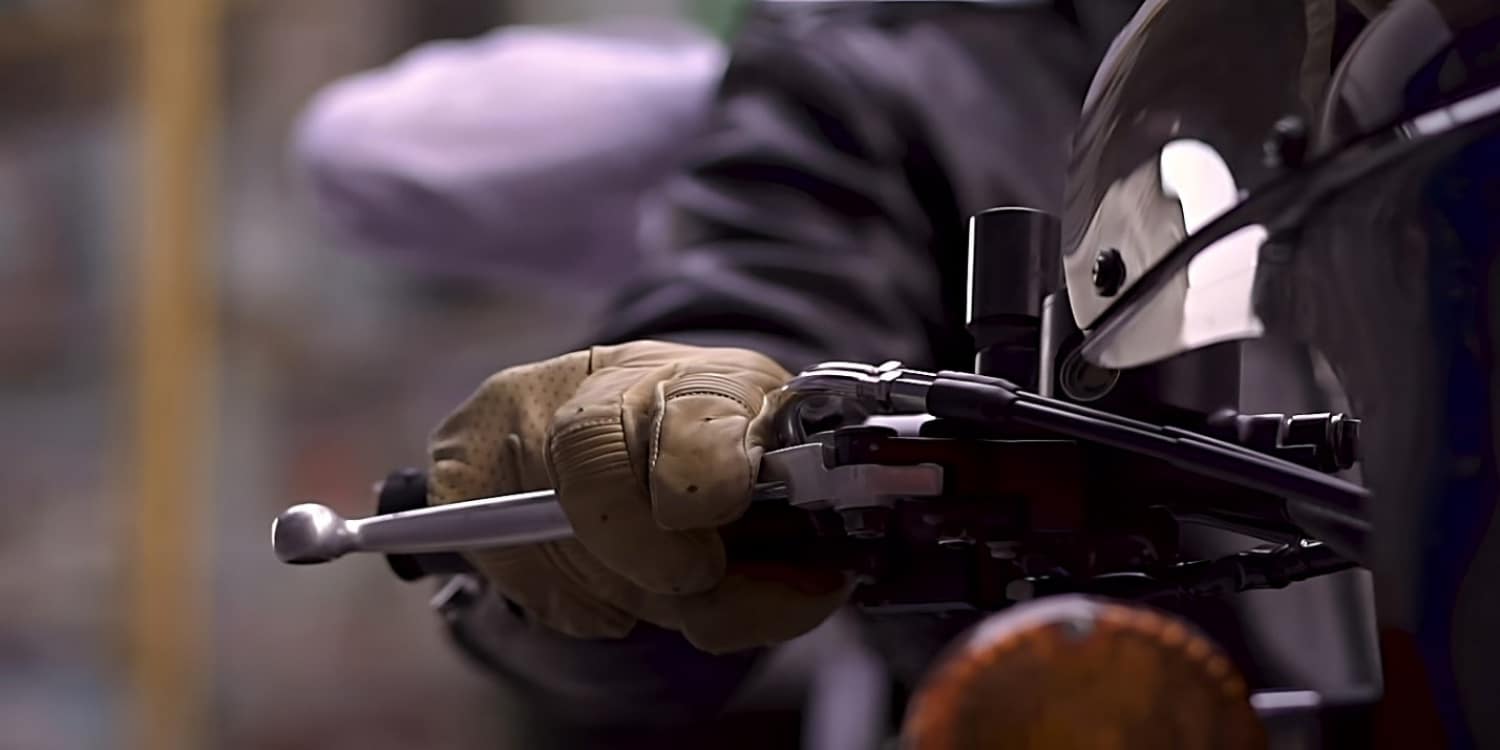
Hydroplaning is a phenomenon where a sheet of water on the road can prevent direct contact between your tires and the asphalt, losing virtually all the grip you had left. The odds of this happening to you increase if you keep crossing over painted patches of the road, metal crossings, and utility access hole covers. You can also coast through puddles in a straight line and avoid sudden acceleration or braking to avoid hydroplaning. A generic formula to estimate the speed in miles where hydroplaning is possible is as follows;
Hydroplaning Speed (MPH) = 9x √Tire Pressure
Taking the typical tire pressure of 36 psi, whose square root is 6, we get a hydroplaning speed of 54 mph (9×6). However, this formula fails to take into account the amount of standing or flowing water and the tire type and tread. It predicts where the phenomenon is possible and interestingly suggests that hydroplaning is only dependent on speed and tire pressure and affects vehicles of all masses the same.
Lightning
Lightning doesn’t strike the same place twice, but once will do the trick! If you encounter a thunderstorm, it is best to find some shelter and wait it out. Riding through a built-up area, this should be easy and safe as lightning seeks out the tallest structures. But should you find yourself caught in a storm in the middle of nowhere, you can abandon your bike near a big rock that is not going anywhere soon.
Remember, your bike is mostly metal and generates some static electricity and sparks, which makes it an attractive sink for lighting energy flowing near the ground.
Obscure Obstacles

If it pours heavily, enough puddles of water may accumulate around and cover obstacles, such as ruts and potholes, making them into hidden death traps. You may need to be wary of unfamiliar routes and assume water pools are deeper than they appear.
Unveiling the Best Motorcycles for Rainy Weather: An Inside Peek at Our Methodology
My approach starts with looking at motorcycles with proper fairing, a windshield, handguards, heated grips, and seats, a 31-33 inch tall or adjustable comfortable seat, decent adjustable suspension, and a rain tire profile of 4.3 inches and a width of 17 inches or wider with a profile ratio of 2.8 inches. And while there is no shortage of small bikes that offer good protection, including scooters, like the Suzuki Burgman 650 or the Peugeot Metropolis 400 for commuting to work in cities, allow me to focus on long-range heavyweight warriors above 400-pound weight tier.
In terms of engine power and construction, I considered only motorcycles 600cc or higher provided they produce smooth tamable power and come standard with liquid-cooled engines, which are less susceptible to water damage as compared to air-cooled ones.
Having put some power to the asphalt, now how to stop given reduced traction in rainy weather. For this, I picked motorcycles with reliable traction control, anti-lock braking system (ABS), and the evolved cornering ABS that is less intrusive while leaning over in the curves. Even more important is the brake construction and materials where I settled for disc brakes on the front and rear, linked brakes, and sintered brake pad surfaces, which perform optimally even when hot and wet.
Even weight distribution ensures the take off and stopping power is not lost at the wheels due to the reduced friction on wet pavement.
For nimble handling and responsive controls, let’s go with a low center of mass without compromising on ground clearance, which must be more than 6 inches. I also preferred bikes with wider handlebars up to 32 inches with an upright riding posture (rise 6.5″, pullback 4″) and possibly steering damping and quickshifter. A trail size of around 4 inches (10.16 cm) provides a good balance between stability and maneuverability in wet conditions.
Finally, I thought most riders don’t want or need 140 hp 100% of the time! And so, next, I looked at motorcycles with additional electronic rider assistance features like rain mode, which tunes down the engine and engages electronic stability control (ESC) that makes a motorcycle approachable. Also, I found adaptive headlights to be a useful accompaniment for rainy and foggy weather.
Now, obviously, I needed to diversify the list for all riding categories, and so, here goes:
Top 7 Best Motorcycles for Rain
| Motorcycle Model | Category | Wet Weight | Engine Size | Braking System |
|---|---|---|---|---|
| Suzuki GSXR 1000 | Best SuperSport | 447 lbs. | 1,000 cc | Brembo T-Drive 320 mm ABS |
| Kawasaki Ninja 650 ABS | Best Sport Bike | 432 lbs. | 649 cc | Nissin Dual Caliper Petal Disk ABS |
| Honda GL1800 Goldwing | Best Luxury/Premium Cruiser | 787 lbs. | 1,833 cc | Dual-Combined ABS |
| BMW R 1200 GS | Best Adventure | 505 lbs. | 1,170 cc | Dual-Channel ABS |
| Harley Electra-Glide Ultra Classic Low | Best Cruiser | 877 lbs. | 1,746 cc | ReflexTM Linked Brakes Along with ABS |
| Ducati Multistrada 1260 | Best Dual Sport | 496 lbs. | 1,262 cc | 4-Piston Monobloc Radial Caliper. ABS |
| Yamaha Niken GT | Best Sport Touring | 580 lbs. | 847 cc | 2 x 298 mm Discs with Four-Piston Radial Calipers. ABS |
Heavier bikes with better weather protection, responsive braking, nimble handling, and sophisticated electronic rider assist will be safer to take out on a rainy day for on- and off-track riding. They have the normal force to retain some grip even on wet asphalt and will not sway easily under crosswinds. Not only that, but also they have more formidable firepower, which can make a difference whether moving fast or wading through flooded streets and river crossings revving at near idle.
From legends like the Honda Goldwing, the discontinued car-like Honda PC800 Pacific Coast, to the fashionable Harley Electra-Glide and the hardy all-terrain BMW GS series with its sophisticated German tech exuding luxury and safety, here is a review of our best motorcycles for rain:
1. Suzuki GSX-R1000 — Best SuperSport
Base Price (MRSP): $16,149
Wet Weight: 447 lbs.

With its new GSX-R1000, Suzuki combines value, adaptability, and performance in the liter-sized superbike class. I know, I know, it’s not even 500 pounds, but it’s right up there on the imaginary 450-lb limit that motorcycles in this category won’t cross. Don’t believe me? Check out the weight of the competing BMW S1000RR!
Closer home, Honda, Kawasaki, and Yamaha have been busy trying to out maneuver this King of Superbikes with machines like Honda’s CBR1000-RR Fireblade and the Kawasaki ZX-10R and Yamaha YZF-R1 receiving millions of yen in research and development.
Anyway, the upgraded suspension, a smooth-shifting electronic quickshifter, and a few other notable changes make this GSX-R more capable on and off the track. I disliked my Kawasaki GPZ900R. It did drop in to slow corners, so in the rain, I was never sure if it was just falling over or dropping in. Now, my brother’s GSX-R1000 is totally different. Just lovely in the corners, wet or dry. And Gee, it’s quick!
We chose this model because Suzuki knows how to make a comfy sportster that handles nimbly and has considerable rider assist features. It checks all the boxes; grunt, attitude, and has surprising great comfort for longer rides. The brakes are a let down on the track, though, because of their overly conservative ABS, but that’s why I would recommend it for rainy conditions. It releases the bite at the slightest hint of a lift in the rear wheel.
2. Kawasaki Ninja 650 ABS — Best Sport Bike
Base Price (MRSP): $8,299
Wet Weight: 432 lbs.

There are bikes for rookies, and there are bikes for pros, but the little Ninja 650 sits on the fence. The middle-weight sport-tourer by Kawasaki has enjoyed considerable popularity and favorable perception for its slick appearance with its aero section performing a respectable job. The air curtains on the fairing are effective at reducing drag, while the visor provides adequate wind protection as you would expect from such a short wheelbase.
Despite weighing sub 500, this bike is generally quite maneuverable and feels stable under windy conditions.
The Ninja 650 has powerful Nissin dual caliper 300 mm petal discs up front brakes and a 220 mm disc at the back, enough to stop a cannonball. I feel Kawasaki could do better with ABS calibration, which is a little overbearing, particularly on terrible bumpy roads. But this works to your advantage when riding on slippery surfaces as ABS is always ready to come to your rescue.
The competition in this class has stiffened recently, as newcomers like the Yamaha YZF-R7, Aprilia RS 660, Ducati Panigale V2, and Triumph Tiger Sport 660 have joined contenders such as the venerable Suzuki SV650 and the Honda CB650R.
3. Honda GL1800 Goldwing — Best Luxury/Premium Cruiser
Base Price (MRSP): $25,300 (DCT)
Wet Weight: 787 lbs.

Honda GL1800 Goldwing, a premium cruiser, is perhaps a more motorcycle-like iteration of the excessive Honda PC800 that had car features and a near maintenance-free motor. Yet the Goldwing has earned its own slot among the greatest long-distance touring motorcycles ever made.
Honda has refined this great masterpiece with every new iteration into perhaps what is now the de facto marking scheme for long-distance touring motorcycles.
The king of long-distance now comes in two variants, a speed manual, and a seven-speed automatic DCT with the additional gear for cruising. Both models are stable 787 lb. mammoths, but you barely notice the weight with the rider assist designed to keep you racking up the miles past the eleventh hour.
4. BMW R 1250 GS — Best Adventure
Base Price (MRSP): $18,350
Wet Weight: 505 lbs.

Let’s not kid ourselves, the mighty GS can handle a little splash! Yes, the Bavarians think of everything, or do they? In Germany, safety is such a big deal that it’s mandated to wear a helmet for everything except lying down in your bed. It’s no wonder that German vehicles are overly engineered for every kind of scenario. If the trip lacks preparation, packing a GS does half the job for you.
If you want a little more grunt and mileage per refill, you can go for their premium R 1250 GS. The enormous tank will keep you going long past the tornado, and it’s your bum that will likely give in first.
It handles like its heritage, a GS. And while we are here at BMW Motorrad, how about getting comfortable in the rain with the legendary K1200LT. It is from that era when Honda wanted to make motorcycles that looked like cars (yes, the PC 800) but didn’t really want to cross that line.
Both are now defunct but still a good choice off the used market to save some bucks and keep bone dry even in rainy riding conditions.
5. Harley-Davidson Electra Glide® Ultra Classic® Low — Best Cruiser
Base Price (MRSP): $24,699
Wet Weight: 887 lbs.
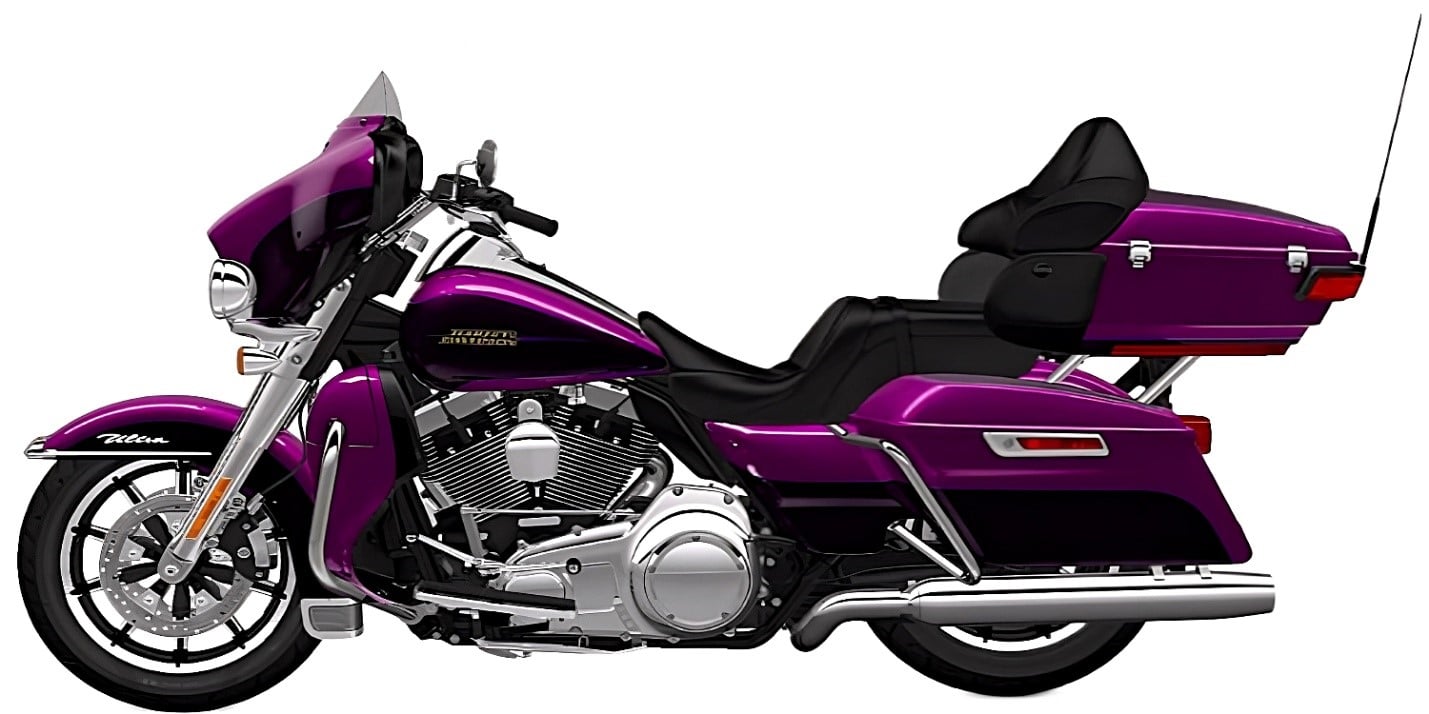
With almost no compromises to ride, the Electra-Glide Ultra is a top of its class motorcycle, especially adapted for all weather riding. From the upright riding position, backrest with cushion for pillion, state of the art infotainment system, the tall seat height, heated grips to the floorboards, and batwing vented fairing for weather protection, there is no shortage of weatherproofing qualities on this art on wheels.
I knew this bike, being a Harley and all, had no shortage of rider aids to enhance safety and comfort but did not expect to find myself doing 90 down a busy highway in the middle of the pouring rain.
Let’s start with weather protection since it is most relevant to riding in the rain on your monsoon excursion. Once you are moving at 40 mph plus, you are well protected under the glide. It has a bar-mounted fairing and screen to keep everything out. Even at its highest points, the Glide had a somewhat stable behavior.
In contrast to the Goldwing, which I struggled with, it maintained its direction even in strong gusts of wind. However, if you want to stop fast, you must use all of your fingers and a strong boot on the back since the Brembo brakes are barely sufficient to stop the mammoth from 80 mph on a slick surface.
6. Ducati Multistrada 1260 Enduro — Best Dual Sport
Base Price (MRSP): $24,495
Wet Weight: 496 lbs.
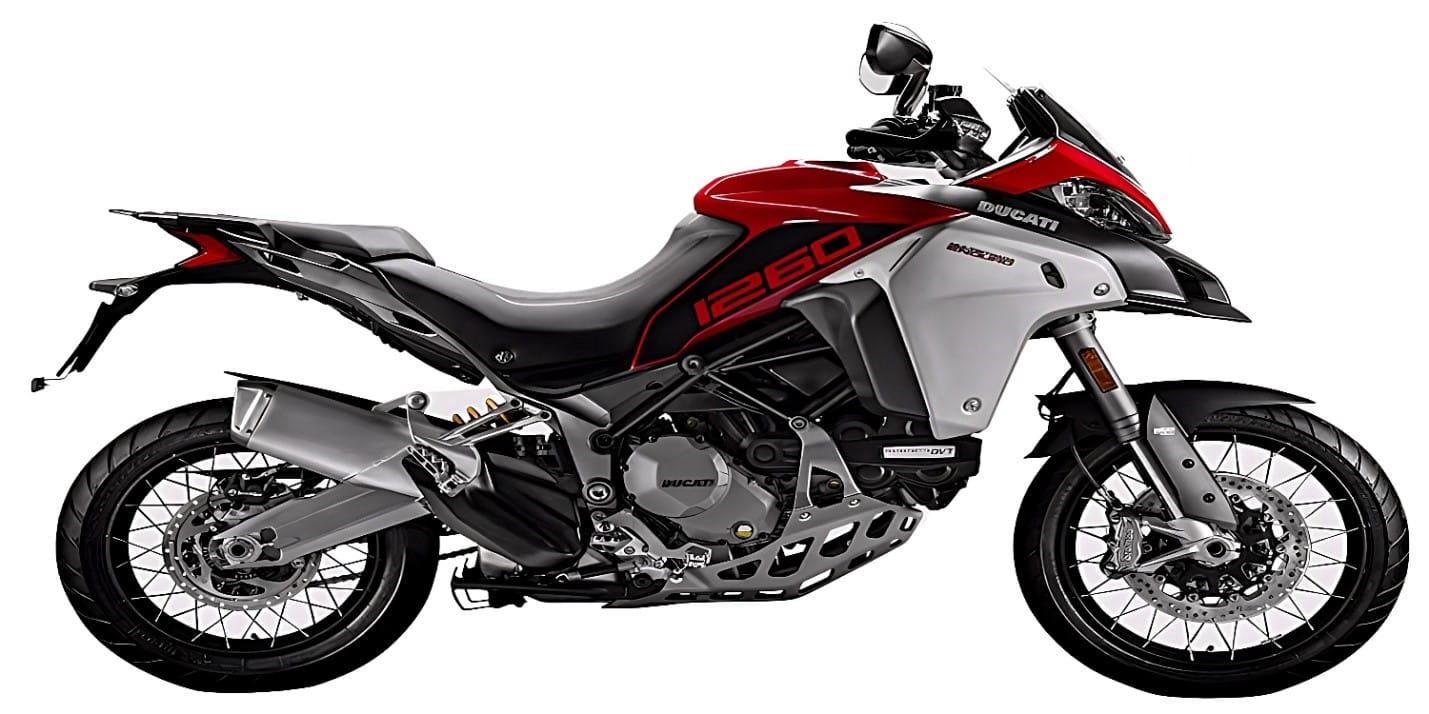
Enter the Multistrada 1260 Enduro with extra enduro mojo, including a 19-inch front wheel, 200mm long travel suspension, high bars, a lofty seat, and lots of terrain clearance. If this bike was competing with the popular BMW’s GS Adventure, then it was glaringly evident that Ducati should create a real dual-purpose Ducati with a 30-liter tank.
A friend recently got this beast on the second-hand market for cheap, so I jumped on the opportunity to ride what is perhaps BMW’s worst nightmare. I got to say, it’s the absolute mile shredder if you must tour during the monsoon!
With the bike’s default settings for Urban mode, you get a comfortable tourer that rides easily and effortlessly on any terrain thanks to its compliant suspension and smooth throttle response. The traction control system is continuously at odds with the power, which is urgent and immediate. Despite my best attempts, the DTC (Ducati Traction Control) system maintained everything secure, stable, and rubber-side down across bumps, surface changes, and damp patches.
The somewhat softer Multistrada 1260 handles beautifully and has brakes to put many true superbikes to shame, but lacks the precision of a 1290 Super Duke GT or the fierce composure of the S1000XR in the curves. If you had to pick on it, you may mention a small instability at high speeds, especially when the bike is fully laden with passengers and baggage.
7. Yamaha Niken GT — Best Sport Touring
Base Price (MSRP): $15,999
Wet Weight: 580 lbs.

Now, even Yamaha agrees that the Niken GT is somewhat of a grotesque and will never appeal to everyone. I personally did not like it for it appears much more of a trike than a “sport touring motorcycle” I was appalled, so much so that I decided to ride to my local dealer’s and test ride it!
I mean, what on earth is leaning multi-wheel? How do you even lean a giant gyroscope like that, even with 15-inch scooter tires it would still handle like a train.
I was right, the motorcycle is both tiny and bulky at the same time. You don’t see where your front tire(s) are, so how are you expected to pick a line through the curves? What could have inspired this insanity? And voila! I got an idea, How about turning off all rider aids and pushing the motorcycle to its limits off-road. I hope my dealer is not reading this, oh forget it, there is a silver lining.
If you are a Harley Tri-Glide rider, all you need to do is park in front of a giant mirror. Yes, people are definitely looking to extend their motorcycle riding lives. It’s a utilitarian bike and for riders without riding skills or impaired mobility like lower back issues. Yes, there are places where the Niken makes sense, and riding in the rain is one of those scenarios.
Tips for Riding a Motorcycle Safely in the Rain

If you are like me, rain is just part of the journey; we can’t let a few thousand droplets of water, which are actually beneficial to cooling your power plant stop the reggae, can we? I have seen days when I kept my war horse at half power and surged through the thickest of rain where cars were literally packing on the road side to wait it out. It all depends on the techniques you apply to counter the problems life throws your way — lemon, lemonades, and all!
If you are a solo rider trotting the globe, you do not have the luxury of time to sit around until you are given pleasant weather to continue to the next mountain pass or border crossing. The sheer determination and will to power through the most difficult chunks of the journey is what sets enthusiasts apart from wannabes.
Slow Down!
I don’t care if you did the stunt for the initial Yamaha Tenere 700 commercial — kudos if you did it was fire – you cannot pull off the same while it’s raining on a public road. Again it’s down to basic principles, even with tread depth and grippy new tires, you are not exempted from physical phenomena like hydroplaning and reduced friction.
A good rule of thumb is to throttle down to half the speed because at the back of your mind, you know traction is down by half.
Keep Distance
Tailgating during rain is a bad idea, from personal experience. Remember visibility is poor, and traction questionable. If you have ever slammed on the brakes and wondered if that action also causes your bike to accelerate then you know what I am talking about here. Allow yourself some braking distance because the driver in front also can’t see very well ahead and they just might brake suddenly.
If you do it from a safe distance, following a car isn’t a bad idea because they are more visible to oncoming traffic than yourself.
Be Wary of Water Puddles and Water Flowing Over the Road
It might look like an inch in thickness and turn out to be a foot deep! Water can be tricky so don’t approach at high speed and let a car pass first so you can judge by the splash they make. Hitting a foot of water at 70 mph is akin to hitting a brick wall quite literally. They do these kinds of tests on cars too. You know, the damage to the test vehicle is usually serious.
Riders with excess of two decades under their chain have died because they underestimated the sheer force and treachery of water flowing over the road.
Respect Water Over Bridges
At the risk of repetition, water is a force of nature to be reckoned with. Now small water puddles and riverlets across the road are one thing and water flowing over a bridge is a whole new ball game. Just two inches deep of that stuff will wash a car off the bridge. Water at a river crossing is powerful and fast-moving, and if you know anything about relative motion, then you know your speed is added to that of the water when you hit it increasing chances of hydroplaning.
Many flood victims are lured in by familiar bridges and river crossings, and the false sense of familiarity sends them to their untimely demise. Keep your wits about you when doing water crossings, stop completely, and go ahead to “test waters” on foot if you must just to be triple sure you can manage.
Don’t Obsess Over Waterproofing

Embrace the rain for the moment. Accept your fate, you will get wet on this ride. In my opinion, waterproofing your upper body and hands is the practical and safe way to go. Rain pants are slippery and have you all over the saddle, waterproof boots are impractical for normal riding and useless when rain pants funnel water inside from the top.
What about slip ons? Have you tried controlling a heavy bike in those? That’s the stuff danger is made of. Waterproof gloves are practical but don’t come cheap. If you are paying $200 for a pair, it better be heated and gives a hand massage as you ride lol!
Consider an Anti-Fog Full Face Helmet
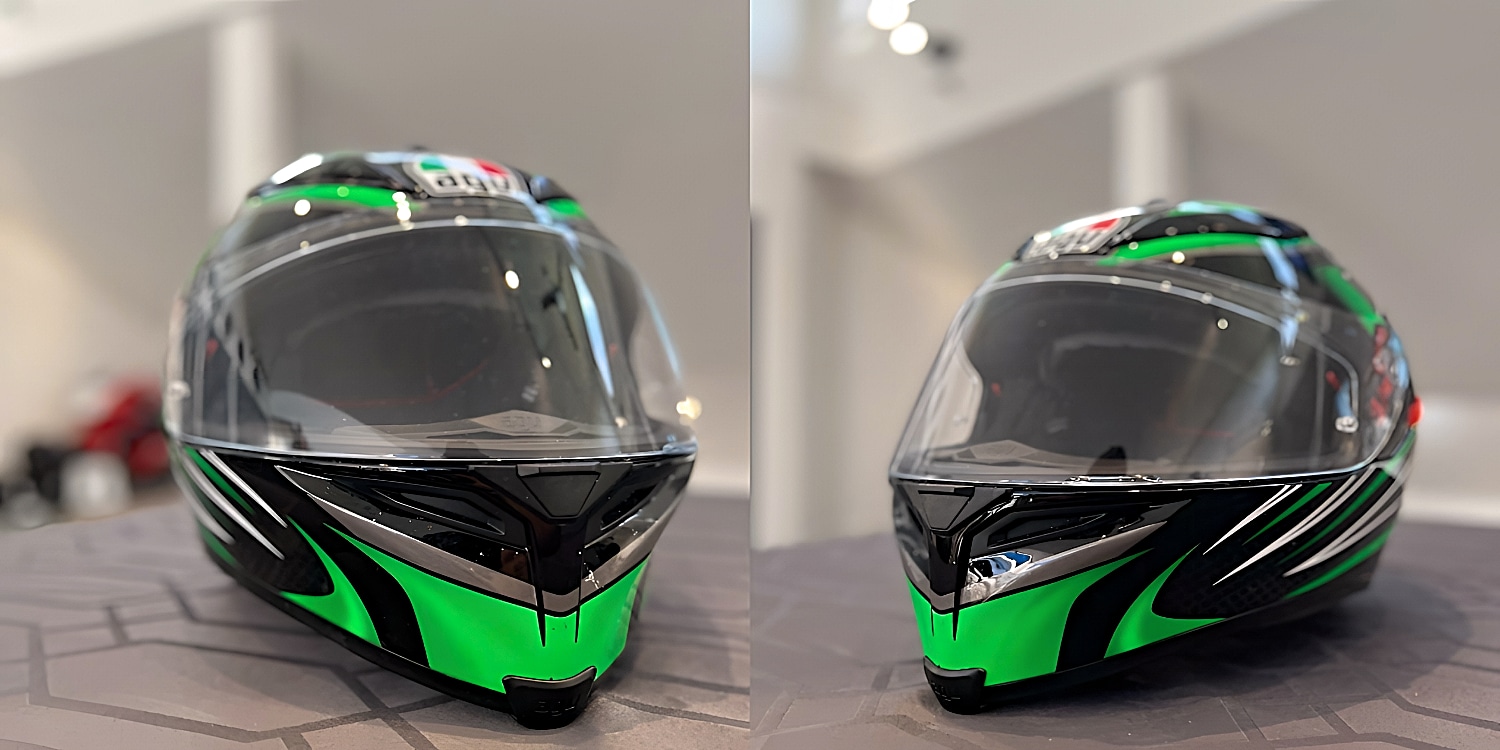
Good protection for your face and eyes comes in handy when battling rain. A water droplet can pack quite the punch at 70 mph. The problem with full-face motorcycle helmets is that they fog up quite easily. I have had to ride with a visor up just to see the road ahead, especially in fog.
My dilemma was solved by a helmet with a double visor (an inner goggles thingie attachment that is supposed to be a sun visor). Now I can lift your main visor and still enjoy some protection for my eyes albeit with some loss of contrast.
- Ride in the Middle: The first few minutes of rain are the most dangerous. Follow car tire tracks because there is less oil and debris there. After a while shift to the car tire groove nearer to the center of the road. You will be more visible to oncoming traffic, and generally, roads are designed to drain water away from the middle.
- Rely More on Engine Braking: Riding a bike is trickier than driving a semi when it rains. You don’t have the weight to keep you planted firmly on the road when you brake. Bikes fishtail just as trucks jackknife, and there is no coming back from both. It’s a fender bender. Decide early when to stop and use more of engine braking rather than coasting and relying on wet brakes.
- Keep a Decent Tread on Your Tires: If you have bald tires, don’t attempt to ride the storm. They are designed to add grip and displace water preventing hydroplaning and skidding while braking.
- Time Your Lights in Traffic: Now picture yourself in a town where the urban planner was not very good at drainage classes. You now have to stop in the water and clutch in then keep revving to keep water out of the pipes. When in water, you want to be precise with your clutch keeping it in the friction zone, which is impossible to do with slick wet textile gloves, waterproof or not.
- Keep It on the Black: We paint roads for safety, but the paint itself is as slick as ice when wet. The same applies for the metal maintenance hole covers and metal linkages on bridges. If one pops up suddenly and you can’t avoid it, you can coast or drop to maintenance throttle and glide over it.
- Wear Red, Reflective Black, or Orange Rain Gear: Red offers the best contrast in foggy and rainy weather. White, light grays, and blues are not good choices as they are dull in rain. Reflective stripes will increase visibility sevenfold regardless of the primary attire color.
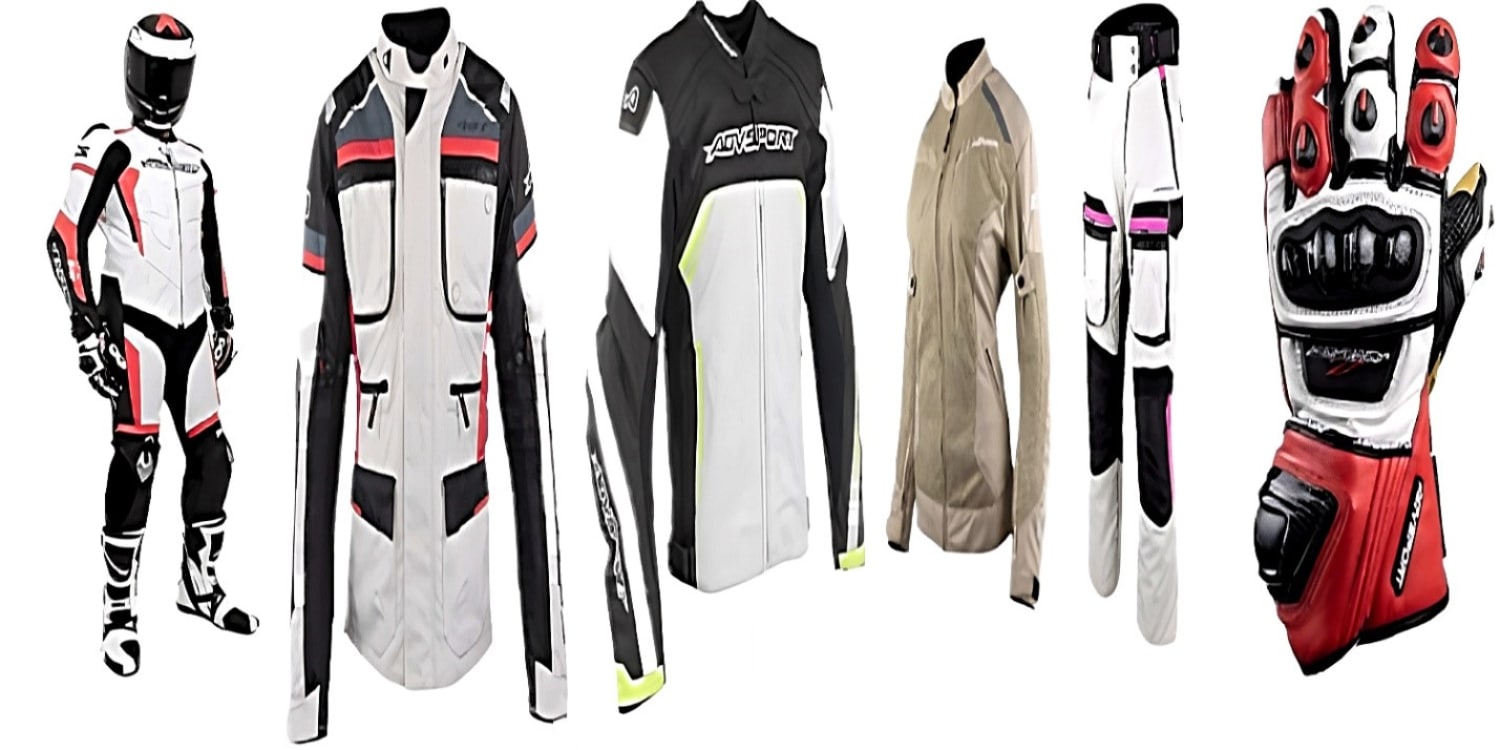
To weather a storm, be very smooth and calculative with your controls – no sudden moves or jolted inputs, or you and your bike will be lying belly up on the curb.
Michael’s Summary and Conclusion
Riding a motorcycle in the rain is an experience that requires care, caution, and the right machine for the job. As someone who has been through it more times than I can count, I can confidently say that when done properly, nothing compares to the thrill of navigating city streets or winding country roads on a rainy day. The key is making sure you have the best motorcycle for rain — one that’s equipped with the proper accessories and safety features necessary to tackle any situation.
When searching for a good bike for wet weather riding, it is essential to consider power output as well as your own personal comfort level. A larger engine will undoubtedly provide more torque and better acceleration in heavy rains, but if you’re uncomfortable managing such a beast, then chances are you won’t be able to enjoy yourself. Additionally, don’t skimp out on waterproofs; high-quality items like those offered by AGVSPORT should be your first choice. You’ll also want to invest in extra tires and check your fluids often. Two-wheelers can slip and slide in the rain, so maintaining excellent traction at all times is important.
A few other things to look for include headlamp visors that reduce glare from wet surfaces, side reflectors for improved visibility, adjustable windshields for wind protection, ergonomically designed seats for added comfort, and even anti-lock brakes for enhanced stopping power. Some brands offer heated grips, which may help in colder climates. Of course, there’s no single “best” motorcycle for rain, but with some careful research and consideration, you should be able to find the perfect ride for whatever kind of precipitation comes your way!
FAQs — I Have the Answers!
Here are common frequently asked questions (FAQs) about motorcycling in the rain:
Q: Are There Any Rain-Proof Motorcycles?
Yes, most motorcycles are rain-proof and can be ridden in the rain with no problems. However, leaving your motorcycle in the rain for days will cause some damage in the form of rusty metal and damaged electrical. You will need some protective rain gear to ride a motorcycle in the rain as no one offers full protection from the rain.
Q: Is It OK to Ride a Motorcycle in the Rain?
Yes, you can safely ride your motorcycle in the rain provided you take precautions and prepare early. You will need proper motorcycle apparel, plus an extra layer for waterproofing. Further, riding in the rain poses many hazards which can be avoided by riding slower and being vigilant.
Q: Is It Okay to Leave a New Bike in the Rain for Several Days?
No, if you leave a new bike in the rain for longer durations the protective paint on the metal chassis will begin to peel off, the chain grease will wash off, and rusting will take effect. Whether new or old, motorcycles need to be stored in a dry spot away from direct sunlight.
Q: How Do I Start My Bike When It Stops in Rain?
Clean your air filter and the bowl at the base of your carburetor (there is a screw in most models for draining it) to remove any water when it stops in rain. Another culprit for bikes not starting after it rains is an ignition system fault either in the switch or the coils.
Information for this article was partially sourced and researched from the following authoritative government agencies, educational institutions, and nonprofit organizations:
MS/A












